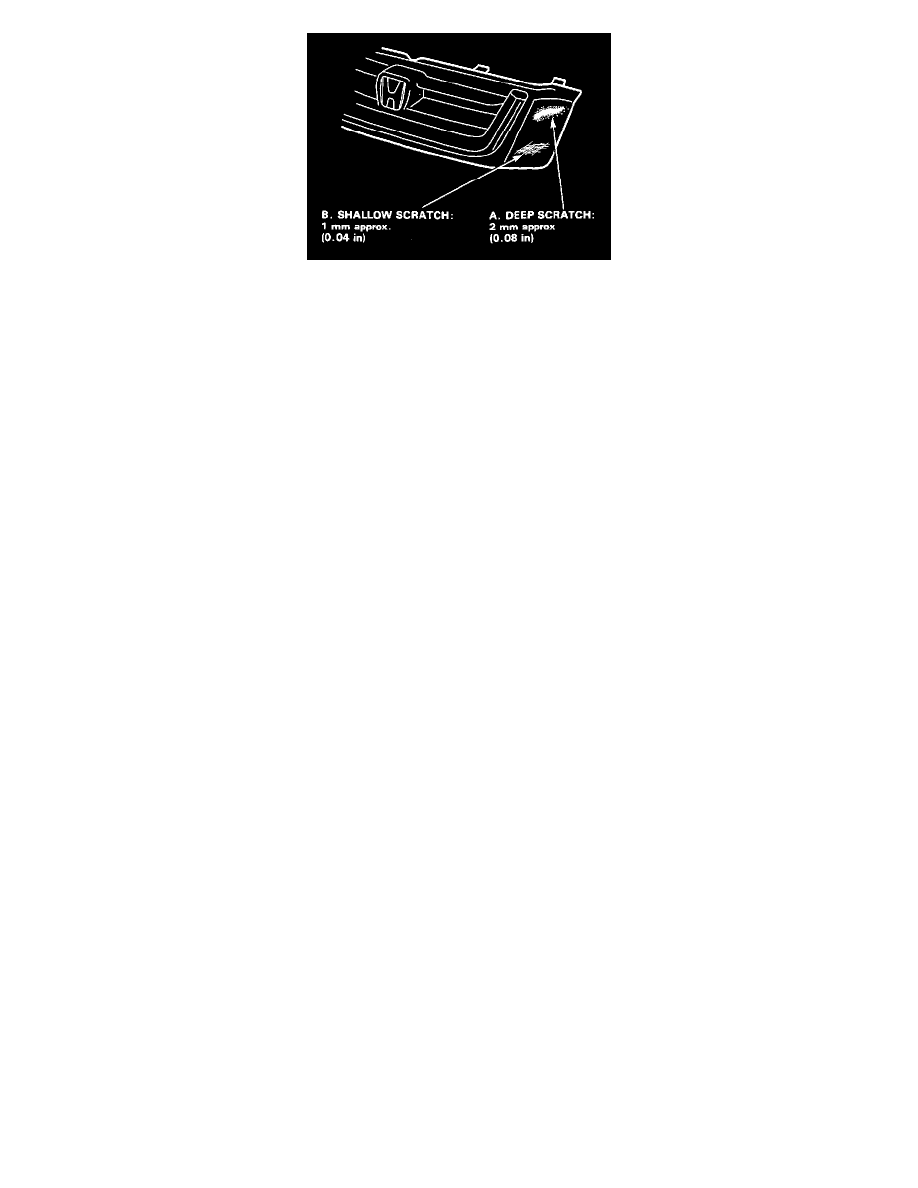CR-V SE 4WD L4-1972cc 2.0L DOHC MFI (2001)

A. Deep scratches, when filling:
1. Sand the damaged section. (#120~#240)
2. Apply the filler and dry.
3. Sand the filler (#240~#400)
4. Coat with the primer/primer surfacer and dry.
5. Sand the primer surfacer. (#600~#800)
6. Top coating.
B. Shallow scratches:
1. Coat with the primer/primer surfacer.
2. Sand the primer surfacer. (#600~#800)
3. Top coating.
C. Repaint:
1. Sand the primer surfacer. (#600~#800)
2. Top coating.
Refinishing Procedures
Refinishing Procedures
1. Base material reconditioning (sanding)
-1. Repaint the replacement part
Lightly sand the part with #400, #600 or #800.
-2. Slight scores or scratches
Use a flexible sanding block, wet sand the damaged section with #400, #600 sandpaper.
NOTE: Sand level to remove damage.
-3. Deep scratches when filling.
Use a flexible sanding block and wet sand the damaged section with #240, #400 sandpaper.
2. Degreasing and cleaning
Clean the repaired area with wax and grease remover, then blow with compressed air.
WARNING:
-
Do not use high air pressure; use only an approved, 210 kPa (2.1 kgf/sq.cm, 30 psi) air nozzle.
-
Wear goggles or safety glasses to prevent eye injury.
NOTE: Wipe dust off surface with a tack cloth.
3. Filling, drying, and sanding
Apply the filler in several thin coats.
NOTE: Mix and apply the filler according to the manufacturer's instructions.
-1. Dry the filler with an infrared dryer for 5 or 6 minutes.
Be sure to keep the dryer 40-50 cm (16-20 in) away from the surface.
-2. Scratch the filled surface with your nail. If the surface is white when scratched, dry sand and wet sand with the #240-#400 sandpaper. Be sure
to sand level.
